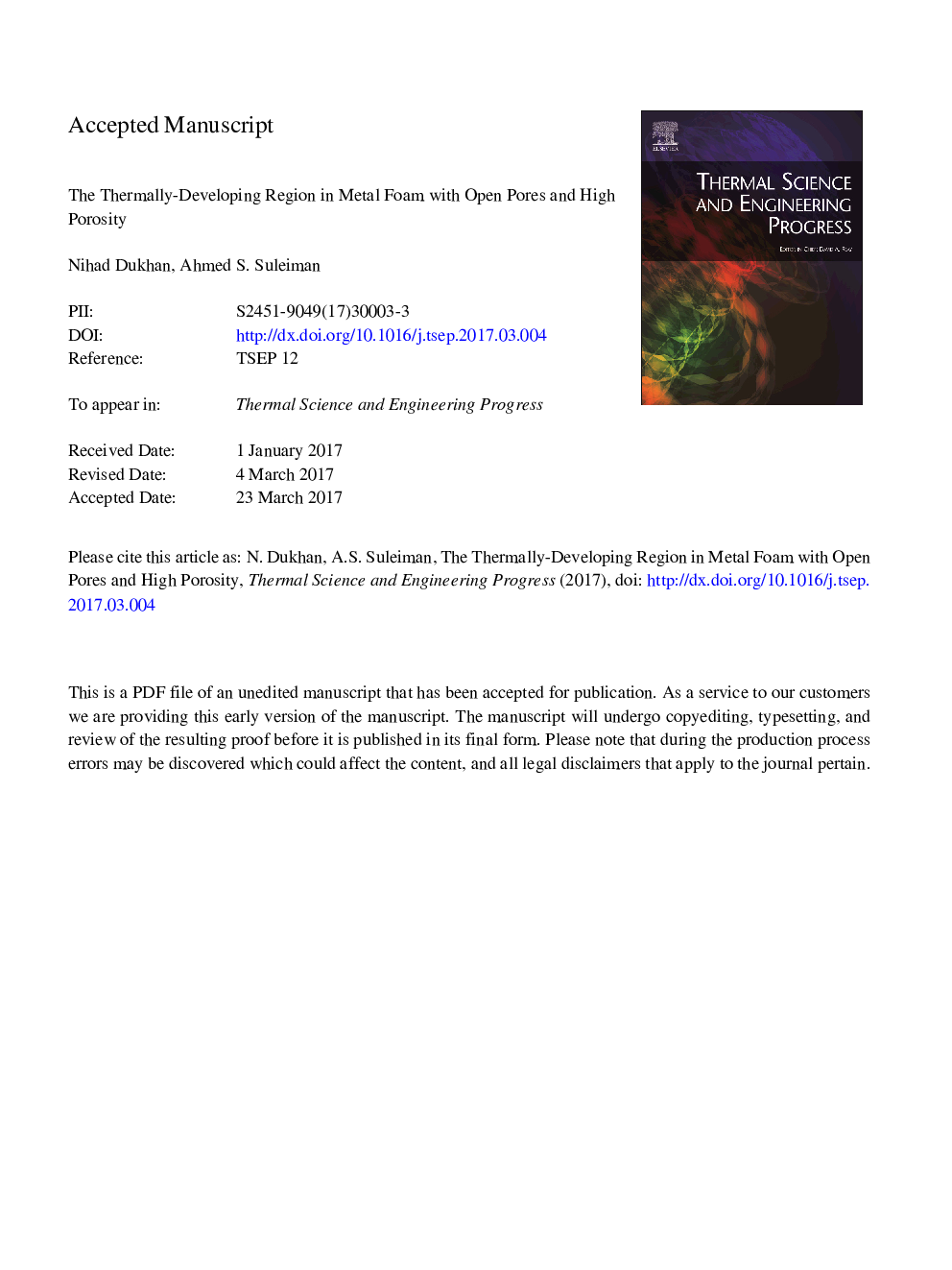| Article ID | Journal | Published Year | Pages | File Type |
|---|---|---|---|---|
| 8918927 | Thermal Science and Engineering Progress | 2017 | 34 Pages |
Abstract
The thermal development phenomenon in foam-like conductive porous media, e.g. open-cell metal foam, is investigated via simulation. A typical cell of commercial metal foam was geometrically idealized while maintaining its actual structural features as much as possible. Then, clones of the idealized cell were virtually connected to each other to form a sizable vertical sheet representing a slice of metal foam. This one-cell thick sheet had a length of 33 cells (flow direction) and a height of 15 cells. Because of symmetry, this sheet could represent flow and heat transfer in a semi-infinite metal-foam channel sandwiched between two heated parallel plates separated by a distance twice the sheet's height. The pertinent mass, momentum and heat equations were solved directly at the microscopic level; and the temperature fields were obtained for various approach velocities using a commercial numerical package. The results provided insight into the thermal development region in general, and the thermal entry lengths were determined for air flow at various speeds. The thermally fully-developed Nusselt number was correlated with Reynolds number. To substantiate the results, comparisons were made to analytical predictions; and qualitative contrasts were made to experimental data from the literature.
Related Topics
Physical Sciences and Engineering
Energy
Energy Engineering and Power Technology
Authors
Nihad Dukhan, Ahmed S. Suleiman,
